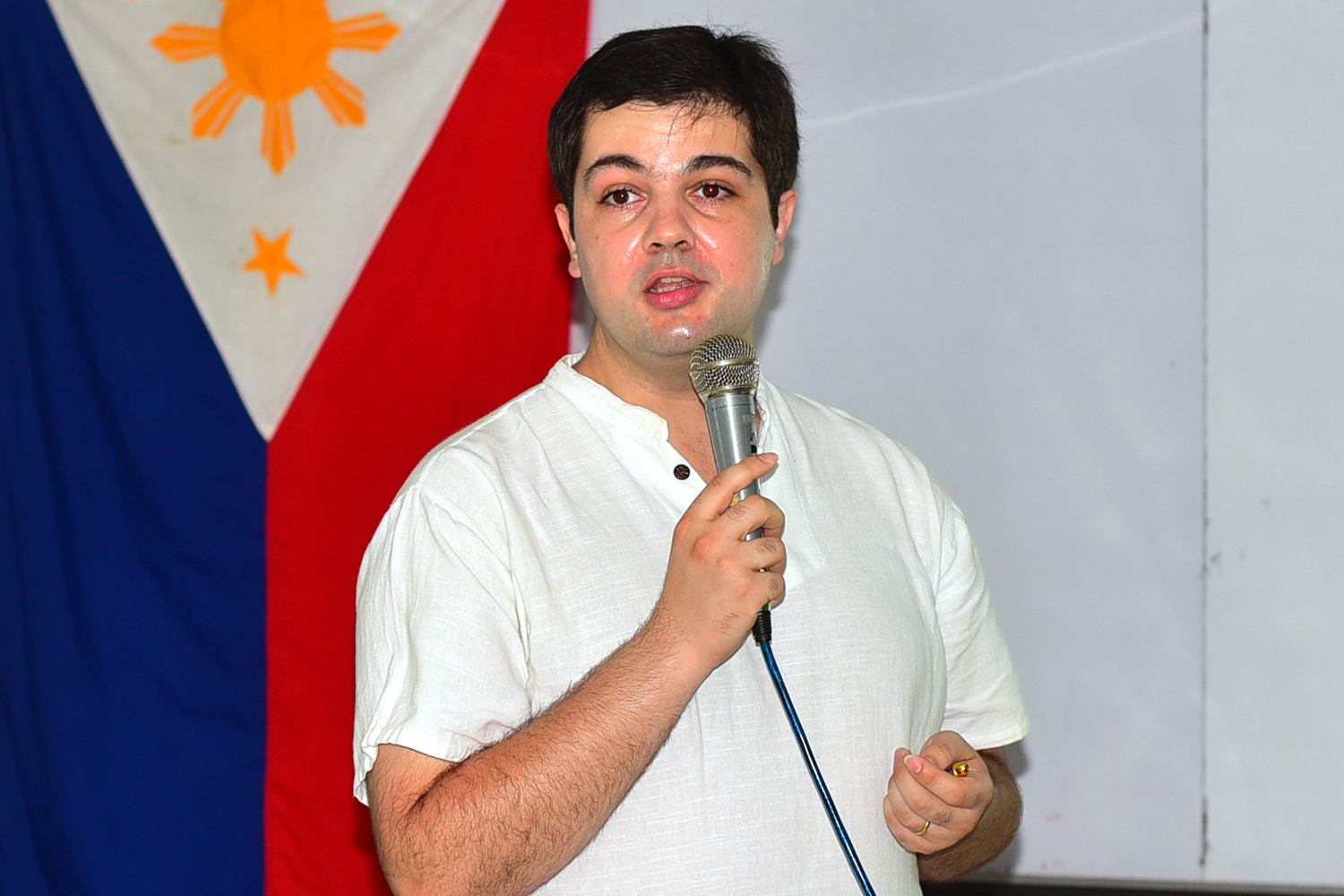
Caves have been favorite tourist attractions all over the world. It promotes culture and history, as well as it is good place to spelunk or conduct nature treks. Caves are also research hotbeds. Aside from geologic findings, many species of flora and fauna are still waiting to be discovered in different caves all over the world.
One important research in caves, which is lesser known, is cave aerology. This was discussed in a seminar last March 14, 2017 at SESAM Lecture Hall, UP Los Baños by a visiting French Scientist, Dr. Nicolas Peyraube of University of Bordeaux, Talence, France. Students from different environmental science classes attended the seminar.
Dr. Peyraube said caves are underground confined environments, which can be found in limestones, or in volcanic stones (lava tubes) or in ice. He said there are different applications of cave aerology, which can be very beneficial to humans. These are cave painting conservation, mushroom culture, wine storage, data storage and even protection of cave visitors.
Dr. Peyraube said he studied two caves in France, which includes the popular tourist site, the Lascaux Cave. Already 17,000 years BP, with a length of 200 m long and 6 to 20 m deep, Lascaux Cave include the historic “Hall of Bulls” paintings. The other cave he studied, a newly discovered one, is the Cussac Cave. It is the site of his pilot study on cave aerology. Cussac Cave is 1.5 km long, with a depth of 20 to 70 m. It is older than the Lascaux Cave, which is 25,000 years BP.
Cave aerology studies the carbon dioxide (CO2) dynamics in caves. CO2 is important for painted cave conservation. It controls the aggressiveness of water on the walls and participates in the calcite deposition on the walls. “The Cussac Cave study is funded by the French government, they wanted to make sure that the study will help in the preservation of paintings, so we will not have any tourism problems in the future” Dr. Peyraube said.
Cave aerology also studies the ventilation inside caves. Cold air trap, an important factor in cave ventilation during warm season, shows that warm air does not get in, since cold air stays inside the cave. On the other hand, during cold season, warm air stays inside.
Cussac Cave has a stable temperature of 13O Celcius, while CO2 variable from 0.3 to 3%. Dr. Peyraube discovered that Cussac Cave has seasonal and daily patterns of CO2 and air ventilation. On the global carbon cycle, Dr. Peyraube said caves are sources of CO2.
“This study might also appeal to Filipino scientists since you have many caves here… tourism is important, but if not managed properly, it can be destructive to the caves”, Dr. Peyraube said. For starters, Dr. Peyraube advised students to try and find out if caves in the Philippines have good ventilation or if there is a presence of “cold air trap”, which can initially be done by manual measurements in the absence of sophisticated equipment.

